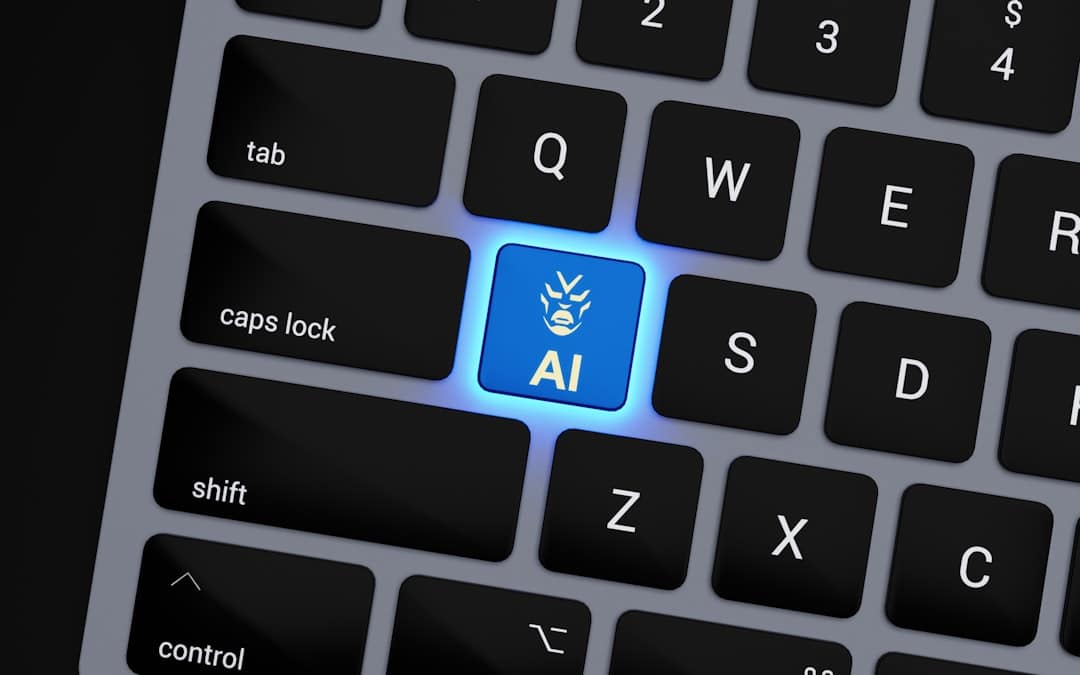The adoption of AI language generation technology has increased significantly in recent years, transforming communication and interaction between individuals, businesses, and organizations. This technology enables machines to comprehend and produce human language, leading to more efficient and effective communication. As a result, chatbots, virtual assistants, and other AI-powered tools have been developed to understand and respond to human language in a natural, conversational manner.
The advancement of AI language generation has also facilitated the development of sophisticated natural language processing (NLP) algorithms capable of analyzing and interpreting large volumes of text data. This capability allows businesses to extract valuable insights from customer feedback, social media conversations, and other unstructured data sources. Consequently, AI language generation has become a crucial tool for businesses seeking to enhance their communication strategies, improve customer experiences, and gain a competitive advantage in the market.
Key Takeaways
- AI language generation has seen a significant rise in recent years, with advancements in natural language processing leading to more sophisticated and human-like text generation.
- The impact of AI language generation on business communication is substantial, with automated content creation, personalized messaging, and improved customer interactions becoming more prevalent.
- Ethical considerations surrounding AI language generation include concerns about misinformation, bias, and the potential for misuse in creating fake news or deceptive content.
- Advancements in natural language processing have led to improved accuracy, fluency, and context understanding in AI-generated text, making it more suitable for a wide range of applications.
- AI language generation is increasingly being integrated into education, offering personalized learning experiences, language tutoring, and automated grading systems. Additionally, AI plays a crucial role in multilingual communication, enabling real-time translation and cross-cultural understanding. The future of human-AI collaboration in language creation holds potential for more efficient and creative content generation, while also raising questions about the impact on human creativity and the need for ethical guidelines.
Impact on Business Communication
Enhanced Customer Experience
Businesses are now able to use AI-powered chatbots and virtual assistants to provide instant and personalized customer support, automate routine tasks, and engage with customers in a more natural and conversational manner. This has not only improved the efficiency of customer service but has also led to higher levels of customer satisfaction and loyalty.
Streamlined Content Creation
Moreover, AI language generation has also transformed the way businesses create and distribute content. With the help of AI-powered tools, businesses can now generate high-quality written content at scale, including articles, product descriptions, and marketing materials. This has not only reduced the time and resources required for content creation but has also enabled businesses to deliver more relevant and engaging content to their target audience.
Competitive Advantage
Overall, the impact of AI language generation on business communication has been overwhelmingly positive, leading to improved customer experiences, more efficient operations, and a competitive advantage for businesses across various industries.
Ethical Considerations of AI Language Generation

While AI language generation has brought about numerous benefits, it also raises important ethical considerations that need to be addressed. One of the main concerns is the potential for AI-generated content to be used for malicious purposes, such as spreading misinformation or creating fake reviews. As AI language generation technology becomes more advanced, there is a risk that it could be exploited to deceive or manipulate individuals, leading to serious consequences for businesses and society as a whole.
Another ethical consideration is the potential impact of AI language generation on employment. As AI-powered tools become more capable of performing tasks that were previously done by humans, there is a concern that it could lead to job displacement and unemployment in certain industries. It is important for businesses and policymakers to consider the ethical implications of AI language generation and take proactive measures to mitigate any negative impacts.
Furthermore, there are also concerns about privacy and data security related to the use of AI language generation technology. Businesses must ensure that they are using AI-powered tools in a responsible manner and are taking appropriate measures to protect the privacy and security of their customers’ data.
Advancements in Natural Language Processing
| Year | Advancements | Impact |
|---|---|---|
| 2018 | BERT model introduced | Significantly improved language understanding |
| 2020 | GPT-3 released | Capable of generating human-like text |
| 2021 | Transformers architecture | Revolutionized NLP tasks |
Advancements in natural language processing (NLP) have played a crucial role in the development of AI language generation technology. NLP algorithms have become increasingly sophisticated, allowing machines to understand and interpret human language with a high degree of accuracy. This has enabled the development of AI-powered tools that can generate human-like text, engage in natural language conversations, and analyze large volumes of unstructured text data.
One of the key advancements in NLP is the development of deep learning models, such as recurrent neural networks (RNNs) and transformers, which have significantly improved the ability of machines to understand and generate human language. These models have been trained on vast amounts of text data, allowing them to learn complex patterns and relationships within language, leading to more accurate and natural-sounding text generation. Furthermore, advancements in NLP have also led to the development of pre-trained language models, such as OpenAI’s GPT-3, which have demonstrated remarkable capabilities in understanding and generating human language.
These models have the potential to revolutionize the way we interact with machines and have paved the way for new applications in areas such as content generation, translation, and conversational interfaces.
AI Language Generation in Education
AI language generation has the potential to transform education by providing personalized learning experiences, automating administrative tasks, and improving communication between students and educators. With the help of AI-powered tools, educators can create interactive learning materials, provide instant feedback to students, and tailor educational content to individual learning styles. This can lead to more engaging and effective learning experiences for students across various subjects and levels of education.
Moreover, AI language generation can also be used to automate administrative tasks such as grading assignments, scheduling classes, and managing student records. This can free up valuable time for educators to focus on teaching and mentoring students, leading to more productive and fulfilling work experiences. Additionally, AI language generation can improve communication between students and educators by providing instant support through virtual assistants or chatbots.
Students can receive personalized guidance on assignments, access educational resources, and ask questions in a natural and conversational manner. This can lead to more efficient communication and support for students, ultimately enhancing their learning experiences.
The Role of AI in Multilingual Communication

Enhancing International Collaboration and Market Expansion
With the help of AI-powered translation tools, businesses can communicate with customers and partners across different languages more effectively, leading to improved international collaboration and market expansion.
Fostering Inclusive Communication Experiences
AI language generation can facilitate cross-cultural interactions in various settings such as travel, business meetings, or social events, leading to more inclusive and accessible communication experiences. Moreover, it can provide real-time translation services through chatbots or virtual assistants, enabling individuals to communicate with others who speak different languages.
Promoting Cultural Diversity and Preserving Minority Languages
AI language generation can also play a role in preserving and promoting minority languages by providing translation services and creating educational materials in less widely spoken languages. This can help preserve cultural diversity and ensure that minority language speakers have access to information and resources in their native languages.
The Future of Human-AI Collaboration in Language Creation
The future of human-AI collaboration in language creation holds great potential for advancing the capabilities of AI language generation while preserving human creativity and linguistic diversity. As AI-powered tools continue to improve in their ability to understand and generate human language, there is an opportunity for humans to collaborate with these tools in creating high-quality content across various domains. One potential future direction is the development of collaborative writing platforms that enable humans to work alongside AI-powered tools to create written content more efficiently and effectively.
These platforms could provide suggestions, generate relevant information, and assist with editing while allowing humans to retain creative control over the final output. Furthermore, human-AI collaboration in language creation can also lead to the development of more inclusive and diverse content by leveraging AI-powered tools to translate, transcribe, or generate content in multiple languages or dialects. This can help bridge linguistic gaps and ensure that content is accessible to a wider audience.
Overall, the future of human-AI collaboration in language creation holds great promise for advancing the capabilities of AI language generation while empowering humans to create high-quality content that reflects diverse perspectives and creative expression. By embracing this collaborative approach, we can harness the full potential of AI language generation while preserving the richness and complexity of human language.
If you’re interested in the potential impact of AI on language creation, you might also want to check out this article on emerging technologies shaping the metaverse. The metaverse is a virtual reality space where users can interact with a computer-generated environment and other users, and it’s an area where AI language creation could have a significant impact.
FAQs
What is AI language generation?
AI language generation refers to the use of artificial intelligence to create human-like language and text. This technology uses machine learning algorithms to analyze and understand patterns in language, and then generates new content based on that understanding.
How does AI create language?
AI creates language through a process called natural language generation (NLG), which involves analyzing and understanding patterns in language data, and then using that understanding to generate new content. This process often involves training machine learning models on large datasets of human language, and then using those models to generate new text.
What are the applications of AI language generation?
AI language generation has a wide range of applications, including content generation for marketing and advertising, chatbots and virtual assistants, language translation, and even creative writing and storytelling. It is also used in data analysis and reporting, where it can automatically generate written summaries of complex data.
What are the potential benefits of AI language generation?
The potential benefits of AI language generation include increased efficiency and productivity in content creation, improved accessibility to information through language translation, and the ability to automate repetitive writing tasks. It also has the potential to assist people with disabilities by providing alternative ways to communicate.
Are there any concerns or limitations with AI language generation?
Some concerns with AI language generation include the potential for misuse, such as creating fake news or deceptive content, as well as the ethical implications of using AI to generate content without proper attribution. There are also limitations in the ability of AI to fully understand and replicate the nuances of human language and communication.











Leave a Reply